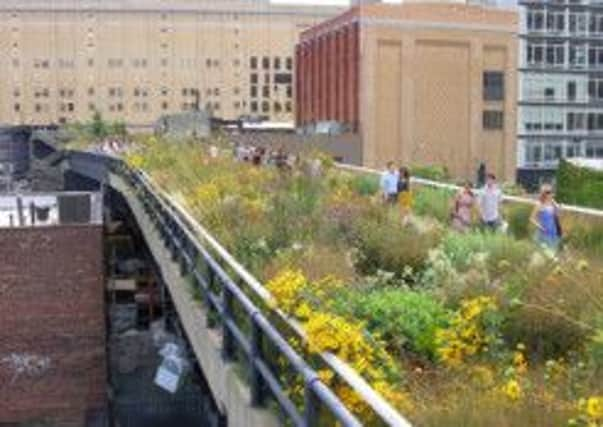Book review: Cities Are Good For You, Leo Hollis


Cities Are Good For You
Leo Hollis
Bloomsbury, £16.99
We talk about rural idylls, not urban ones. We often talk of escaping to the country, but rarely of escaping to the city.
Hollis is here to argue, however, that under the right circumstances, cities can be good for us. His book looks at the successes and the failures, the interventions which have made cities places which nourish the soul and the ones which leave residents yearning for rural idylls.
Advertisement
Hide AdIt’s timely; more than 50 per cent of the world’s population live in urban centres and this century, says Hollis, “will be the age of the city”.
Examining the conflict between the application of planning theory from the top down and the more chaotic, unpredictable way people actually live their lives, he cites numerous 20th-century examples. Both structured, planned growth of cities and a more chaotic, organic approach have worked. And both have failed.
Swiss architect Le Corbusier’s designs for a housing scheme on the outskirts of Bordeaux were modern and ambitious but, argues Hollis, tenants’ attempts to personalise their new homes with window boxes and wooden shutters “blurred the clean, modernist lines”. It was a plan which worked only in theory.
Then there are the success stories: Singapore, for example, which has been described as “one of the cleanest, safest, richest and dullest cities in the world”.
Hollis bookends his tome (and at nearly 400 pages it is a tome; I’m not entirely sure who he’s targeting with quite this much urban theory) with descriptions of Manhattan’s successful High Line park – a pleasing stripe of greenery amid the grey, built on a derelict elevated railway line.
We are given a history of urban planning, taking in cities including Bangalore, Shanghai and Santiago via London, where the 2011 riots are cited as a rare example of a way in which cities aren’t always good for you.
Advertisement
Hide AdHollis’s choice of title is a little clunky and his attempts to prove his point sometimes strained. Are cities good for us? They can be, for those of us with access to buzzy, artsy projects such as the High Line park. But the reality of urban centres for many millions across the world can be loneliness, isolation, polarisation and extreme poverty.
With more and more people living in cities, much has been written of late on their impact on our lives. Hollis gives us plenty of theory and some fairly middle-class-friendly examples of ways in which cities can be good for us: bike hire schemes and secret dinner parties in Paris, for example. I’m left unconvinced that cities actually are good for us, however.
Advertisement
Hide AdThey’re pretty good for me; I quite like the sound of those dinner parties and I love hopping on a Boris Bike. Themes of close communities and interesting art scenes speak to me, personally.
As for the millions living in grinding poverty in cities, or those closer to home who find them cold, impersonal, alienating places? I’m simply not sure that Hollis presents a strong enough case to back up his bombastic title. «